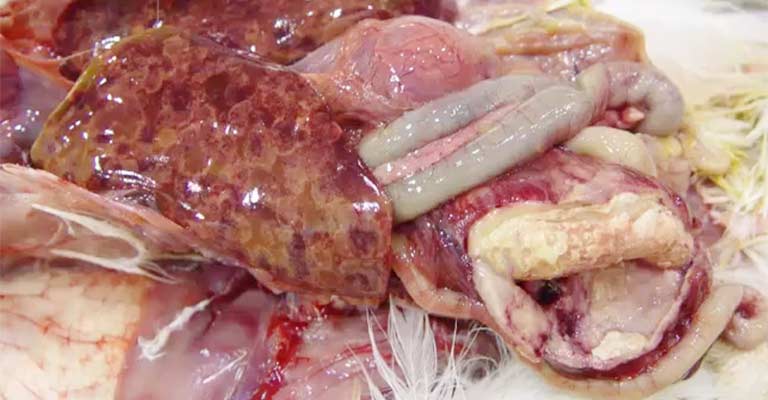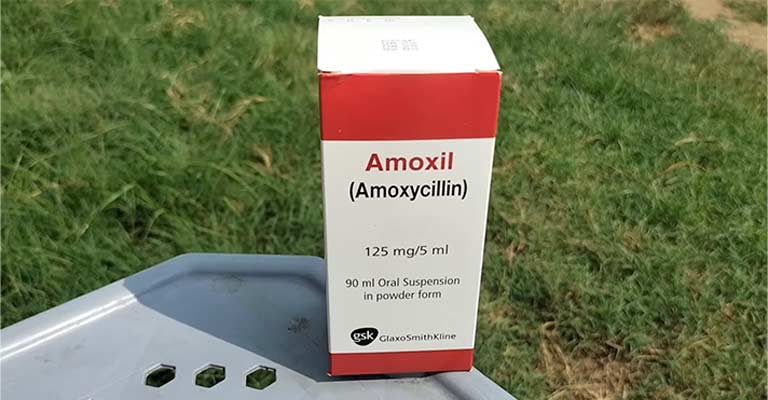Bacterial infections in the small intestines of birds, collectively referred to as avian enteritis, pose significant challenges to the health and well-being of avian species worldwide.
This complex and often multifactorial condition can affect various bird species, including domestic poultry and wild birds, leading to substantial economic losses in the poultry industry and impacting avian populations in the wild.
The small intestine, a crucial organ for nutrient absorption and digestion, becomes a battleground for microbial invaders, triggering a cascade of detrimental effects.
In this exploration, we delve into the dynamics of bacterial infection of small intestines in birds, examining key pathogens, transmission mechanisms, clinical manifestations, and potential preventive measures.
Understanding the intricate interplay between bacteria and avian hosts is essential for the development of effective strategies to mitigate the impact of these infections and safeguard the health of avian populations.

Bacterial Infection of Small Intestines in Birds
Several bacterial species have been identified as major contributors to avian enteritis. Clostridium perfringens, Salmonella spp., Escherichia coli, and Campylobacter jejuni are among the most prevalent culprits.
Each of these pathogens exhibits unique characteristics, contributing to the complexity of avian enteritis.
Clostridium perfringens, for instance, produces toxins that damage the intestinal lining, while Salmonella spp. and Escherichia coli can cause systemic infections in birds.
Transmission Routes
Understanding the transmission routes of these bacterial pathogens is crucial for effective disease control. Avian enteritis can be transmitted horizontally through direct contact with infected birds, contaminated feces, and environmental surfaces.
Additionally, vertical transmission from infected breeders to their offspring may play a role in the persistence of these infections.
Contaminated feed and water sources further contribute to the spread of bacterial agents, emphasizing the importance of biosecurity measures in preventing outbreaks.
Clinical Manifestations
The clinical manifestations of avian enteritis vary depending on the causative agent and the severity of the infection. Common symptoms include diarrhea, reduced feed intake, weight loss, lethargy, and in severe cases, increased mortality.
Birds affected by bacterial infections in the small intestines may exhibit poor growth rates and reduced production efficiency, leading to economic losses in the poultry industry.
Timely recognition of clinical signs is essential for implementing prompt interventions and preventing the spread of the infection within flocks.
Host-Pathogen Interactions
The interaction between bacterial pathogens and the avian host is a complex interplay of virulence factors, host defenses, and environmental factors.
Understanding the molecular mechanisms behind these interactions is critical for developing targeted therapies and preventive measures.
Research in this area focuses on identifying host factors that confer resistance or susceptibility to bacterial infections, as well as exploring the genetic and immunological aspects of avian enteritis.
Preventive Strategies
Effective prevention of avian enteritis requires a multifaceted approach. Implementing robust biosecurity measures, including strict hygiene protocols, proper waste management, and control of vectors, is essential in minimizing the risk of infection.
Vaccination programs tailored to the specific pathogens prevalent in a region can significantly reduce the incidence and severity of avian enteritis.
Additionally, improving husbandry practices, such as optimizing nutrition and providing adequate housing, contributes to the overall health and resilience of avian populations.
Research Advances and Future Directions
Ongoing research efforts continue to unravel the complexities of avian enteritis, with a focus on developing innovative strategies for disease management.
Advances in genomics, molecular biology, and immunology provide new insights into host-pathogen interactions, paving the way for targeted therapeutic interventions.
Future directions include the development of next-generation vaccines, antimicrobial alternatives, and precision medicine approaches to address the diverse challenges posed by bacterial infections in the small intestines of birds.
Is There A Natural Antibiotic For Birds Against Bacterial Infection?

Maintaining the health of birds, whether in domestic poultry settings or the wild, is paramount for various reasons, including conservation efforts, agricultural sustainability, and companion animal welfare.
While antibiotics have long been used in the treatment of bacterial infections, there is a growing interest in exploring natural alternatives to conventional antibiotics.
This article delves into the concept of natural antibiotics for birds, shedding light on potential options derived from nature.
Honey as a Natural Antibiotic
One natural antibiotic that has gained attention for its antimicrobial properties is honey. Known for its ability to inhibit the growth of bacteria, honey exhibits both broad-spectrum antibacterial and antioxidant properties.
Its application in avian health involves the use of medical-grade honey on wounds, as well as its incorporation into the diet to potentially combat bacterial infections in the digestive system.
Garlic and Onion
Garlic and onion, members of the Allium family, have been recognized for their natural antibiotic properties. These bulbs contain allicin, a compound with antimicrobial effects.
Incorporating small amounts of crushed garlic or onion into the bird’s feed may contribute to enhancing its immune response and resisting bacterial infections. However, caution should be exercised, as excessive amounts may have adverse effects.
Oregano Oil and Thyme
Essential oils from herbs such as oregano and thyme have been studied for their potential antibacterial and antioxidant properties. These oils contain compounds like carvacrol and thymol, which exhibit antimicrobial activity.
Adding these herbs to bird feed or providing access to fresh sprigs may support the bird’s immune system and contribute to overall health.
Probiotics and Fermented Foods
Maintaining a healthy balance of gut bacteria is crucial for avian health and resilience to infections.
Probiotics, such as lactobacilli and bifidobacteria, can serve as natural antibiotics by promoting the growth of beneficial bacteria in the gut, thus inhibiting the proliferation of harmful pathogens.
Fermented foods, like yogurt and kefir, can be introduced into the bird’s diet to enhance the population of beneficial microorganisms in the digestive system.
Turmeric and Curcumin
The vibrant yellow spice, turmeric, contains curcumin, a compound renowned for its anti-inflammatory and antimicrobial properties. Research suggests that curcumin may have therapeutic potential against bacterial infections.
Incorporating turmeric into the bird’s diet, either in its raw or powdered form, may contribute to overall health and potentially aid in preventing or managing bacterial infections.
Aloe Vera
Aloe vera, known for its soothing properties, has been explored for its potential antibacterial effects.
While more research is needed to fully understand its efficacy, some bird owners incorporate aloe vera into the diet or use it topically on wounds with the belief that it may support the bird’s immune system and aid in recovery.
Echinacea
Echinacea, a well-known herb in traditional medicine, is believed to possess immunostimulatory properties.
While its efficacy in birds is not extensively studied, some bird enthusiasts use echinacea supplements to potentially enhance the bird’s immune response and resistance to bacterial infections.
What Is Amoxicillin Used For In Birds?

Amoxicillin, a broad-spectrum penicillin-type antibiotic, is commonly used in veterinary medicine, including avian healthcare. Its effectiveness against a wide range of bacteria makes it a valuable tool for treating bacterial infections in birds.
Here’s an overview of how amoxicillin is used in avian medicine:
Treatment of Respiratory Infections
Amoxicillin is frequently prescribed for respiratory infections in birds. Respiratory issues, often caused by bacteria such as Escherichia coli, Pasteurella, or Mycoplasma, can affect the upper or lower respiratory tracts.
Amoxicillin helps combat these bacterial infections by interfering with the synthesis of bacterial cell walls, ultimately leading to bacterial cell death.
Management of Gastrointestinal Infections:
Gastrointestinal infections are common in birds, particularly in crowded or stressful environments. Amoxicillin is employed to address bacterial infections affecting the digestive system.
These infections may manifest as diarrhea, weight loss, and lethargy. By targeting the bacteria responsible for gastrointestinal issues, amoxicillin aids in restoring the bird’s digestive health.
Treatment of Skin and Soft Tissue Infections
Birds are susceptible to skin and soft tissue infections, especially in instances of wounds, injuries, or feather follicle infections.
Amoxicillin’s bactericidal action helps combat bacterial pathogens in these cases. It is often used topically or administered systemically, depending on the severity and nature of the infection.
Prevention and Treatment of Bacterial Septicemia
Bacterial septicemia, a systemic bacterial infection that can be life-threatening, may affect various organs and tissues in birds. Amoxicillin is employed both as a preventive measure in high-risk situations and as a treatment for established infections.
Its ability to reach high concentrations in the bloodstream makes it effective against bacteria causing septicemia.
Dosage and Administration
The appropriate dosage of amoxicillin for birds depends on factors such as the bird’s species, weight, and the specific type of infection. Avian veterinarians typically prescribe the medication and guide its administration.
Amoxicillin is available in various forms, including oral solutions and injectables. Administering the medication as directed is crucial to ensure its efficacy and prevent the development of antibiotic resistance.
Considerations and Caution
While amoxicillin is generally well-tolerated in birds, it is essential to exercise caution and follow veterinary recommendations. Some avian species, such as parrots, may be more sensitive to certain antibiotics.
Additionally, improper use, such as self-administration without professional guidance, can lead to antibiotic resistance and other complications.
Avian veterinarians play a crucial role in determining the appropriate treatment plan, including the selection of antibiotics like amoxicillin.
Combination Therapy and Culture Sensitivity Testing
In some cases, avian veterinarians may opt for combination therapy, using amoxicillin alongside other antibiotics to address complex infections or those involving multiple bacterial strains.
Culture sensitivity testing helps identify the specific bacteria causing the infection and their susceptibility to different antibiotics, guiding veterinarians in selecting the most effective treatment.
FAQs
What are the common symptoms of avian enteritis in birds?
Common symptoms of avian enteritis include diarrhea, reduced feed intake, weight loss, lethargy, and, in severe cases, increased mortality. Birds may also exhibit poor growth rates and reduced production efficiency.
How are bacterial infections in the small intestines of birds transmitted?
Bacterial infections in birds’ small intestines, such as avian enteritis, can be transmitted horizontally through direct contact with infected birds, contaminated feces, and environmental surfaces.
Additionally, vertical transmission from infected breeders to offspring and contaminated feed and water sources contribute to the spread.
What preventive measures can be taken to reduce the risk of avian enteritis outbreaks?
Implementing robust biosecurity measures is crucial, including strict hygiene protocols, proper waste management, and vector control. Vaccination programs tailored to prevalent pathogens, along with optimizing nutrition and housing conditions, contribute to overall flock health and resilience.
Are there specific bacterial species responsible for avian enteritis?
Yes, several bacterial species are commonly associated with avian enteritis. These include Clostridium perfringens, Salmonella spp., Escherichia coli, and Campylobacter jejuni. Each pathogen has unique characteristics contributing to the complexity of avian enteritis.
What advancements in research are contributing to the understanding of avian enteritis?
Ongoing research focuses on unraveling the molecular mechanisms of host-pathogen interactions, genomics, and immunology.
These advances provide insights into developing targeted therapies, next-generation vaccines, and precision medicine approaches for managing bacterial infections in the small intestines of birds.
Conclusion
The study of bacterial infections in the small intestines of birds, collectively known as avian enteritis, underscores the intricate interplay between pathogens and avian hosts.
The impact of these infections extends beyond the individual bird to affect poultry industries and wild bird populations globally.
Key bacterial pathogens, transmission routes, and clinical manifestations have been explored, highlighting the complexity of this pervasive issue.
As we strive to address avian enteritis, it is evident that a multifaceted approach is necessary. Prevention strategies, including biosecurity measures, vaccination protocols, and improved husbandry practices, play a pivotal role in minimizing the risk of bacterial infections.
Ultimately, a comprehensive understanding of avian enteritis empowers us to protect the health and welfare of both domestic and wild bird populations.
By continuing to advance our knowledge and implement proactive measures, we can work towards mitigating the economic impact on poultry industries and preserving the biodiversity of avian species worldwide.